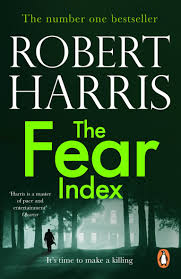The Library Wars (2013) Toshokan sensô
IMDb is a runtime of 2h and 8m, rated 5.9 by 1,001 cinematizens.
Genre: SyFy.
DNA: Japan.
Verdict: More, please! (And less.)
Tagline: Ripped from today’s headlines!

In the near future of 2019 (!) the book burners are masked, armed, and dangerous. Welcome to Florida!
Why?
Villains read books. (Do they?) To eliminate villains, eliminate books, because it is too hard to eliminate villains. Blaming books for what readers do is an old, sad song we are hearing again today. (It is only a matter of time before this logic leads to eliminating authors, as one character observes.)
Over-reach soon follows as the masked thugs enjoy creating mayhem, and in response a political compromise emerges that makes public libraries an asylum for all books. Bookstores on the other hand are not protected and they become the battleground of the thugees. The line between bookstores and libraries is blurred by both sides, and to ensure that exception libraries recruit a defence force. The inevitable happens when boys play with guns: innocent bystanders get killed, and each side blames the other. Check the headlines today for proof.
By the way an abridged version of the statement on intellectual freedom figures in the story. For the complete text click here: https://www.ifla.org/wp-content/uploads/2019/05/assets/faife/statements/jlastat.pdf
This statement forbidden in much of the world.
In this maelstrom we have a candy-coating of a romantic comedy. Believe it or not, Mortimer. The players are charming, the situations far-fetched and yet…well, watch the television news tonight. Maybe not that far fetched.
One of the web sites that guides my viewing, completely missed the point on this film. This blogger devoted most of his comments to the unlikely proposition that municipal libraries would have the funds to create an armed force or that the national government would permit it. ‘Hello! It is fiction.’ But even short of that realm, political compromises are often contradictory. The National Guard may confront local police forces. It has happened before, and now it is again in the offing.
This film has spawned sequels which I may pursue. But this one was attenuated with way too much shoot ‘em up. Way too much. So less of that, please, and more about the books, and why they are important.
Though there were many nice touches salted away. I liked the comment that the Book Burners wanted to censor the history of censorship to conceal it. But there were also loose ends, like who was the murderer influenced by reading and what was in the archive that had to be rescued. Maybe I blinked.
Of course I thought of Fahrenheit 451 and also the more obscure short but powerful Phoenix – A Science Fiction Short Film (2014) from Warnuts Entertainment, 19 August 2016 on You Tube. I commented on the latter elsewhere on this blog. Click on.























